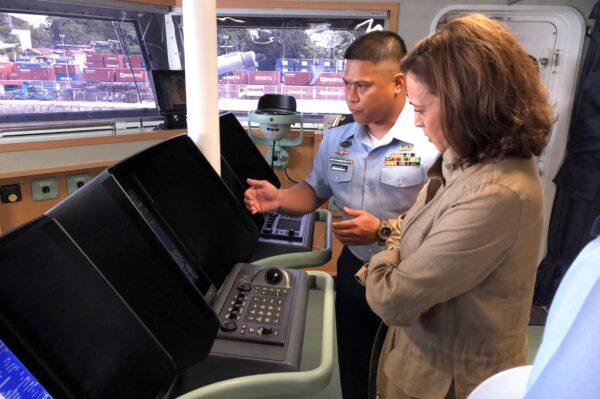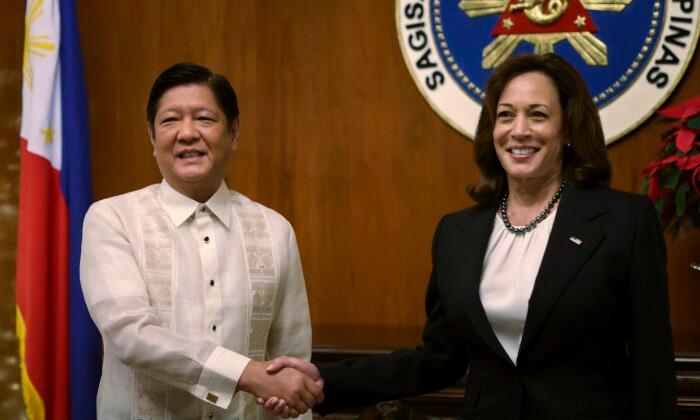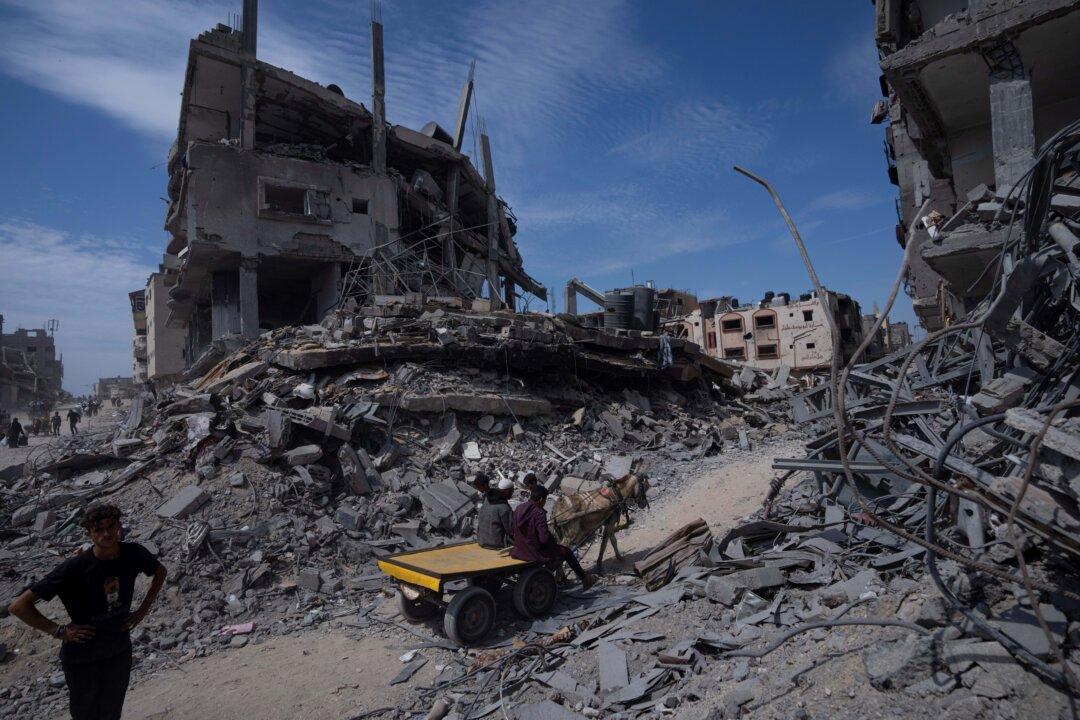The United States will provide $7.5 million to boost the Philippines’ capabilities to combat illegal fishing in the South China Sea, Vice President Kamala Harris said Tuesday, reaffirming the U.S. commitment to supporting its ally.
Harris made the announcement during her visit to Palawan, a remote Philippine-controlled island in the South China Sea. She became the highest-ranking U.S. official ever to visit the island.
“As an ally, the United States stands with the Philippines in the face of intimidation and coercion in the South China Sea,” she said aboard the Philippine Coast Guard ship.

Harris reaffirmed the United States’ support for the Philippines in its South China Sea claims, citing a 2016 Permanent Court of Arbitration ruling that firmly rejected China’s expansive maritime claims.
China claims almost the entire South China Sea based on its so-called “nine-dash line,” despite competing claims by other nations. Beijing rejected the tribunal’s decision and continued to make incursions.
“We will continue to rally our rallies and partners against unlawful and irresponsible behavior. When the international rules-based order is threatened somewhere, it is threatened everywhere,” Harris said.
US Defense Commitment
Prior to her visit to Palawan, Harris met with Philippine President Ferdinand Marcos Jr. in Manila and reaffirmed the United States’ “unwavering commitment” to defending the Philippines in the South China Sea.Marcos Jr. stated that the U.S.–Philippines alliance has become even more important in light of what he called “upheavals” in the region, and that he does “not see a future for the Philippines that does not include the United States.”
The United States and the Philippines are allies under the 1951 Mutual Defense Treaty, which stipulates that the countries would defend each other if attacked.





